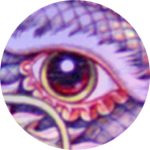HASAN KANBOLAT
h.kanbolat@todayszaman.com
August 10, 2015, Monday
China: 21st century Silk Road project
China is undergoing a major transformation. Its high-paced growth is taking a toll on the social structure. For instance, Mao Zedong's Cultural Revolution largely undermined the fabric of family and social life. Even members of the same family would report each other's anti-establishment activities. It was an ideology-centric era in China when people were required to hang photos of Mao, Karl Marx, Friedrich Engels and Josef Stalin on the walls of each room in the house.
Gone are the old days. The wounds of the past were redressed and had started to be forgotten. The practice of wearing single-type attire was terminated in 1973. Although the elder and more traditional members of the Communist Party of China (CPC) continue to stick to this tradition, it is more like a veneration of the past. Mao has come to be accepted and honored as the founding leader of China. China has emerged as the world's primary buyer of raw materials and energy. As the same time, it has become the primary exporter of cheap processed goods. It is the world's third largest foreign investor after the United States and the European Union.
In 2013, China announced the One Belt, One Road (OBOR) development framework that focuses on the land-based and maritime silk roads. The land-based Silk Road is around 7,000 kilometers and was mainly used between the second and 16th centuries to transfer raw materials and processed goods from China to the West. The Silk Road was instrumental not only in transformation and commerce but also played a major role in improving communication and civilization between East and West. The Beijing administration argues that China, which has implemented a reform and foreign expansion program, has to integrate with the world to fuel its growth, while the world needs close cooperation with China for development. There was certain progress in eliminating inequality among people and countries until the 1980s, after which inequality started to increase. The rise in inequality has sped up, particularly in the wake of the disintegration of the Soviet Union in 1991.
The Silk Road project seeks to eliminate inequity and ensure that people and countries are provided with equal opportunities. The project takes into consideration diversities as well. The main purpose of the project is to connect dynamic Asia to developed Europe, help the development of the countries under the project and cement a more balanced structure of regional cooperation. Under the project, China is offering state scholarships to 10,000 students from Silk Road countries. Cooperation will be improved in the areas of tourism, technology, health and science. Investments, commerce and visa procedures will be facilitated. Free-trade zones will be established. The project will avoid competing with other regional cooperation projects and, rather, seeks to have a complementary relationship. China expects a foreign trade volume of $2.5 trillion with the Silk Road countries in the next 10 years. This figure is currently $1.3 trillion.
In China, the number four is considered to bring bad luck. This is because its ****phone is the Chinese word for death. The number seven is also considered ominous as it is perceived as bringing obsession or getting stuck. In Chinese, the word eight is very similar to the word for wealth. Therefore, if a business employs many eights, it is believed to be successful. When the Chinese words for danger and opportunity are merged, you get the Chinese word for crisis. In Chinese mythology, the lotus flower represents purity and integrity as it emerges from the mud. I hope the phrase Silk Road brings good luck to all the Silk Road countries. This project may or may not be successful, but we need solidarity, peace and development with equality.





 Reply With Quote
Reply With Quote